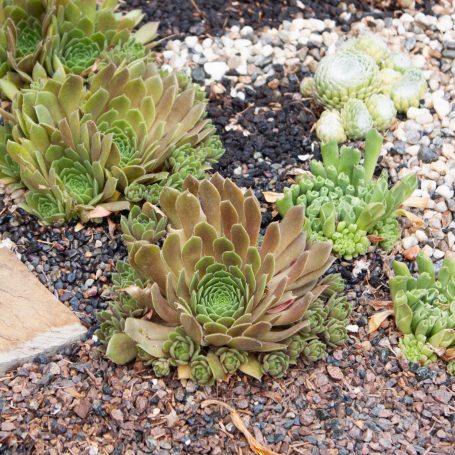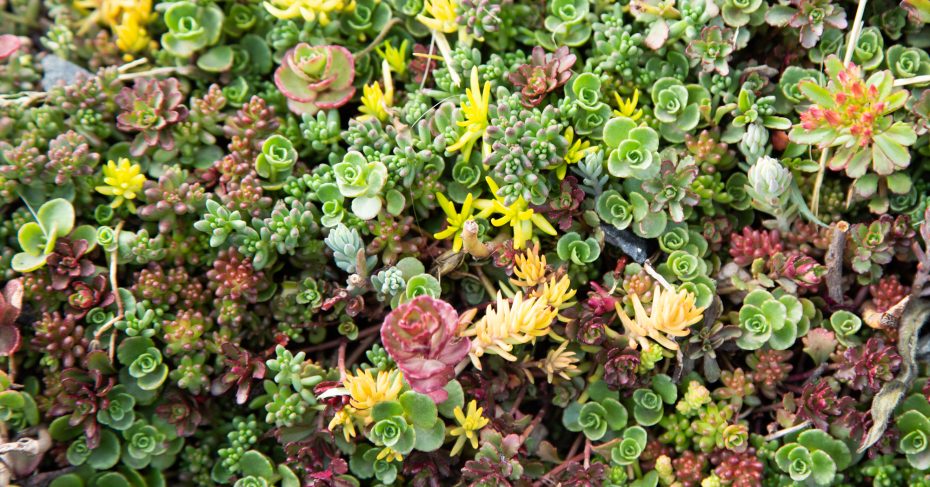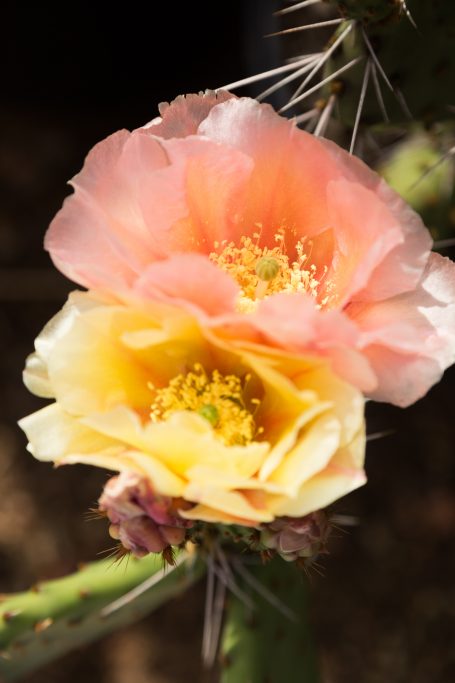Can succulents survive outside in the winter?
If you live in a climate with 4 seasons, especially one with harsh winters, there are some succulents that will grow outdoors year-round for you, though most will not.
Each succulent has different temperature needs, though most won't tolerate long-term freezing temperatures.
However, there is a whole group of cold hardy beauties that are very over-looked in the world of succulents! A lot of people don’t realize they exist, or that there are so many of them!
Succulents and Sunshine is reader supported. We may earn a commission, if you purchase through links on our site, such as Mountain Crest Gardens, Amazon, or Etsy. We only promote products we use and trust.
Sempervivums, some Sedums, and their cold hardy Opuntia cousins are all great options for maintaining a gorgeous succulent garden outdoors year-round, even if your climate gets well below freezing for most of the winter months.

At the beginning of my succulent adventures I was living in Utah, in a Zone 5 climate. I was mostly growing succulents indoors because I wasn't aware there were succulents that could tolerate snow.
Fortunately I was introduced to Mountain Crest Gardens, and my succulent garden was dramatically changed, and improved. Mountain Crest Gardens is the largest supplier (to my knowledge) of cold hardy succulent varieties.
Their nursery is actually in a mountain valley in northern California, near Mount Shasta, and they get snow throughout the winter. They have the most beautiful collection of cold hardy succulents you’ll see.
The great thing about these Sempervivums, Sedums, and Opuntia (or “Prickly Pear cactus”) is that they can also live in more temperate climates!
You can see more details about what succulents tolerate freezing temperatures in the video below:
If you're not familiar with what these succulents look like, Sempervivums form perfect rosettes and are much tougher than other rosette succulents, such as Echeverias. There are also some really stunning color combinations: everything from pinks, reds and purples, to greens, yellows and blues. You really get the whole rainbow!
The cold-hardy Sedums form more of a ground cover, but they also come in a variety of shapes, textures and colors. They look great paired with Sempervivums, and you'll find that some of them create a nice trailing effect over the edge of your succulent pots.

The cold-hardy Opuntia have really caught my attention. A couple of years ago, I was able to go down to Waterwise Botanical Gardens in Escondido, California when they launched a line of cold-hard Opuntias. While they may seem like normal “Prickly Pear” cactus on the outside, in the spring they produce the most beautiful flowers you'll ever see on succulents.
One of my absolute favorites was Opuntia “Pina Colada,” which has a flower that actually changes colors. One day it's an orangey-pink color, and the next it's yellow with pink and orange stripes in the middle.

The awesome thing is that Mountain Crest Gardens and Waterwise Botanicals have partnered up to offer these cold-hardy Opuntias on Mountain Crest Gardens' website.
So, all of you in areas with four seasons, be sure to consider these amazing succulents! I think you’ll find it extremely rewarding to see some color and life in the middle of winter. And there's nothing quite like seeing those Opuntias bloom at the beginning of spring!
It's so fun to see how these tough plants come back with beautiful, bright colors, even after being under inches–or feet–of snow over the winter. Succulents never cease to amaze me!
Non-cold hardy succulents
As I’ve already mentioned, not all succulents will survive freezing temperatures, and some won’t even tolerate more than 2-3 nights with a frost. Most of the more common succulent varieties you’ve likely heard of or seen fall into this “tender” or “soft” category.
In the case of succulents such as Echeverias, Aeoniums, Haworthias, and most Aloes, along with a lot of other succulents, you won’t be able to keep them outside during a winter with snow and ice.
If the freezing temperatures last only a night or two, you can cover them with a frost cloth or other blanket, but this is not a long-term solution.
You can look up what growing zone you're in to determine what succulents will work for you outside. Once you know your growing zone, find out which succulents you own and see what temperatures they are rated for.
For more details about how to care for your succulents over the winter, be sure to check out our post all about caring for succulents in winter.